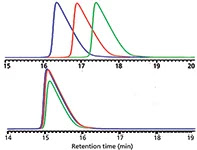5 causes and solution for changing retention time.

There are many factors impacting Retention time during HPLC analysis. Among them 5 most impacting parameters and there solutions are as below: 1) Contamination build up: This is related to some contaminants which gets retained in the column. This can be solved by continuous flushing using strong solvents. This will flush out the residue and constant retention time will be achieved. 2) Equilibration time: If equilibration time for gradient is not sufficient then it will give variation in retention time. The equilibration time should be sufficient so that constant retention time is achieved. 3) Online degassing: If online degassing is not proper then it will affect the retention time of the peak. Online mobile phase degassing is done by the in build degassed on HPLC system which should be checked from time to time. 4) Evaporation : If reservoir bottles of mobile phase and solvents are not covered properly, slow evaporation of solvent will cause change in mobile phase composition. This ...
.jpeg)